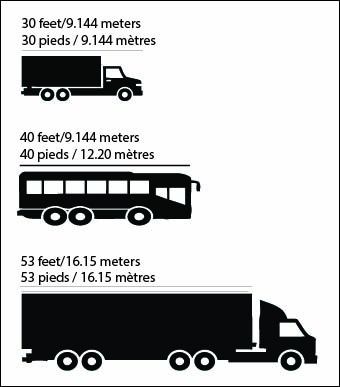Creating a balanced transportation network
Moving goods across the city is an important consideration. Saint John is an industrial city. Businesses of all sizes require product to be shipped out and/or supplies shipped in, usually by truck. However, the needs of industry and business to move goods, including by truck, must be balanced with other users of the transportation network.
The purpose of MoveSJ, the City’s master transportation plan, is to create a balanced transportation network. MoveSJ takes an integrated approach to transportation incorporating factors such as parking, active transportation and transit, as well as the movement ofContinue reading
Creating a balanced transportation network
Moving goods across the city is an important consideration. Saint John is an industrial city. Businesses of all sizes require product to be shipped out and/or supplies shipped in, usually by truck. However, the needs of industry and business to move goods, including by truck, must be balanced with other users of the transportation network.
The purpose of MoveSJ, the City’s master transportation plan, is to create a balanced transportation network. MoveSJ takes an integrated approach to transportation incorporating factors such as parking, active transportation and transit, as well as the movement of cars and trucks. The plan integrates active shared modes of transportation and supports sustainable development, healthy communities, and a vibrant urban center. MoveSJ also guides infrastructure planning and investments for streets and sidewalks.
There are a number of questions posed in MoveSJ that require a policy direction. One of the items is the impact of heavy trucking in Saint John's Central Peninsula (also referred to as the South Central Peninsula or SCP).
Large trucks on small streets
As noted in the Central Peninsula Secondary Plan, the development pattern for streets in the area began in 1783. Much is still intact. Streets are laid out through a grid plan oriented north to south. These streets were planned when horse, carriage, and walking were the methods of transportation and delivery in the area.
Today, trucks -- some with trailers as long as 53-feet (16.15 meters) -- deliver goods throughout the Central Peninsula. Trucks must use designated trucking routes until any final streets are reached to make the delivery; streets that are truck routes tend to be designed to better accommodate large trucks. However, businesses or other destinations of trucks can be located on any street in the Central Peninsula. That means trucks of many sizes, including those with 53-foot trailers, are currently permitted on all streets in Saint John, whether the street is designed for trucks or not.
The graphic below shows a comparison of some of the different vehicle size: a smaller box delivery truck, a transit bus, and truck with trailer. A truck with 53-foot trailer is almost twice the length as a transit bus.

Having such large transport trucks on small streets presents a number of challenges for City traffic engineers who need to consider pedestrians, accessibility and other types of vehicles and mobility devices while planning upgrades to streets and sidewalks.
Large trucks take up a lot of right-of way space at intersections for turning and width. This conflicts with traffic calming and pedestrian crossing safety otherwise afforded through narrowing streets at intersections. Truck parking, including use of loading zones, also takes up space that could be used for on-street parking for passenger vehicles, or improvements for pedestrians. Heavy trucks also cause damage to city streets.
First steps towards a policy direction
There are a number of measures that the City could take to mitigate the impacts of heavy trucking in the Central Peninsula.
Limiting hours of operation
Limiting access for trucks with 53-foot (16.15 meters) trailers within the Central Peninsula to time of day deliveries in off peak (non-business hours) would prevent deliveries that block travel lanes when they are used most.
Limiting size of trucks
Limiting the length of trucks allowed in the area (outside of designated trucking routes) to trucks with trailers less than 53-foot could allow for more complete streets and traffic calming solutions at intersections. It would allow more on-street parking spaces instead of long loading zones.
Limiting size of loading zones
To support any restriction on the movement of 53-foot tractor trailer units in the area, the City could either limit the size of loading zones to accommodate only smaller commercial vehicles, and/or isolate larger loading zones to specific locations within the Central Peninsula.
The pros? The cons?
The goal of MoveSJ is to create a balanced transportation network. These ideas have the potential to improve the quality of life for residents and some businesses in the area. However, they might significantly increase cost of transporting goods to and from businesses in the area.
We want to hear from city residents, businesses and other stakeholders to help inform Common Council’s decision when considering this potential policy direction.
Take the survey
The City is gathering input from businesses, residents, and people who work in the area to finalize a policy direction for truck travel and commercial loading zones. This information will be used to bring a recommendation to Council.
Before beginning the survey, please review the materials provided.
Materials include a map of designated truck routes and a map of the commercial loading zones in the area.
The survey will close on November 26, 2025.





